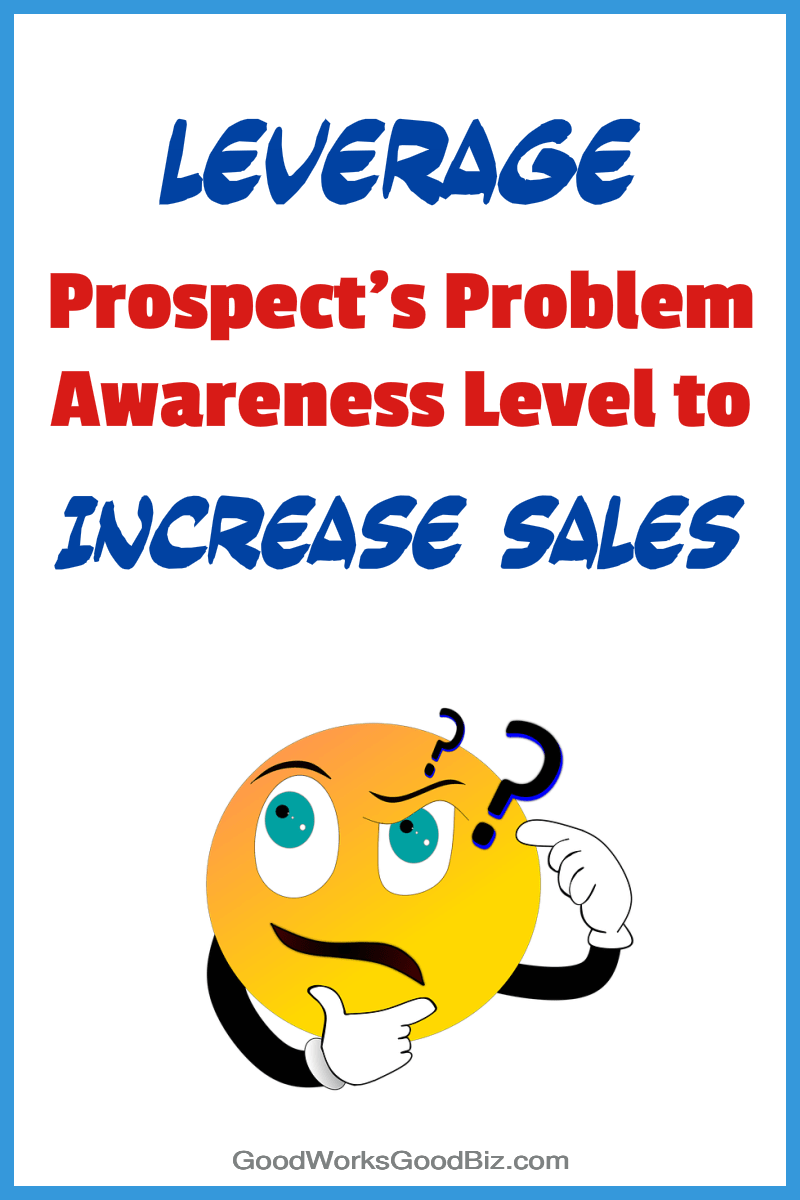Leveraging your prospect’s problem awareness level can dramatically increase sales and conversions.
Your prospects have different needs: they differ in their levels of awareness of their problems as well as solutions and products available. Before you create any marketing campaign, the most important question you need to ask yourself is this: what does my prospect already know?
Before you spend any money on marketing, you need to ask yourself: what does my prospect already know?
Does your prospect know he has a problem?
If he doesn’t know that there is a problem, he will not buy your product (unless you educate him). There is no need to solve a problem that he doesn’t know exists.
Effective marketing meets the prospects where they are in the problem-solving cycle. Before you start creating a marketing strategy to sell your offer, you need to understand the level of awareness of your prospects regarding their problems.
In his book, Breakthrough Advertising (1966), Eugene Schwartz came up with a simple system to categorize the level of awareness of any target audience; so that, you know exactly how to market to them.
According to Eugene Schwartz, Any Prospect Can Be Categorized Into One of Five Levels of Awareness
1. The Most Aware– This prospect is already in your sphere of influence. He is your raving fan. This is your most valuable audience.
This prospect is most likely to be a subscriber in your email list; he usually wants to hear from you as often as possible. He has a high problem awareness level.
Action Steps: Make sure he knows what products and services you offer. This prospect is going to be the first to buy and the first to share in social media.
2. Product Aware– This prospect knows what you sell, but he’s not sure if it’s right for him. He has a medium-high problem awareness level. He wants more information or motivation to buy. This prospect is likely to be a subscriber in your email list.
Action Steps: He’s a window shopper. He wants to know that the product or service you are selling is tailored to his specific needs. This audience craves reassurance and testimonials. You need to continue to build trust and educate this prospect.
3. Solution Aware– This prospect knows that there is a solution to his problem and he’s trying to find the right one. He has a low-medium problem awareness.
This prospect doesn’t know that you offer a solution to his problem. He reads your content and knows who you are, but he doesn’t trust you yet.
Action Steps: Focus on educating this prospect as well as building rapport and trust. You want him to get to know who you are, your brand and how your products or services can help him solve this problem.
4. Problem Aware– This prospect knows that he has a problem; he is suffering and he is in pain, but he doesn’t know that there is a solution. He’s using the search engines to look for content that can educate him about a potential solution for his problem.
Action Steps – He has a low problem awareness level. Offer him high-value content for free and ask him to subscribe to your email list. Focus on building trust with this audience. Make sure your content educates him about his problem and offers potential solutions. If your content is useful and engaging, this prospect can become your best customer.
5. Completely Unaware– This prospect is at the lowest level of the problem-awareness cycle. He is probably in a browsing mode trying to entertain himself online. He has no knowledge of who you are, what problem he may be having or what solution may help him.
Action Steps – He’s not actively trying to solve a problem. This prospect may not be worth targeting for most new marketers. If you’re a new marketer, you can start out by focusing your advertising on more aware prospects because they are more likely to buy from you.
Unless you educate unaware prospects, they will not buy your products or sign-up for your services.

